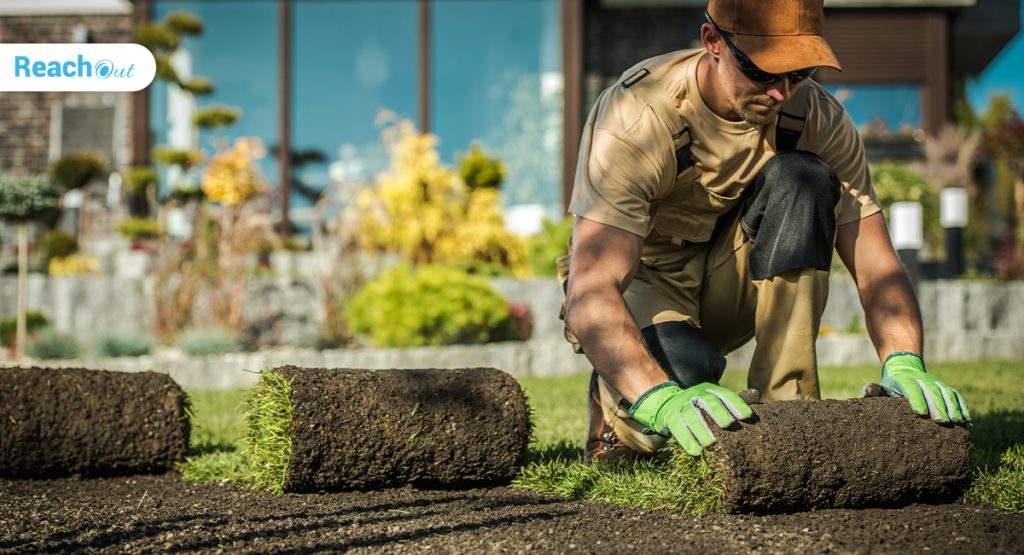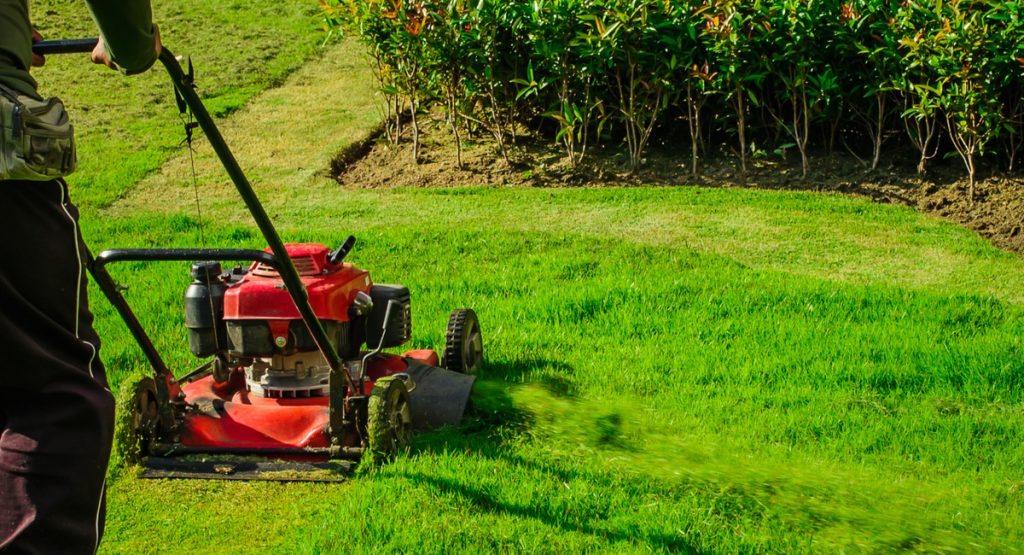
Key Inclusions in a Landscaping Checklist and Why it Matters
Only a well-organized business succeeds in today’s hyper-competitive age. Companies work on low margins and need to move fast to net the deal before a competitor takes away the customer.
A landscaping checklist is a powerful property management tool that helps the business keep track of tasks to maintain a lawn or garden. It finds use in estimates as a line item of services on offer. Field agents may use a landscape maintenance checklist to track the execution of landscaping tasks at the site.
Read more: 4 Tips to Upscale your Lawn & Landscaping Service
How does a landscaping checklist help a lawn care business?
A landscape maintenance checklist:
- Helps a lawn care business become more agile and competitive.
- Keeps the business organized. Listing each task and activity makes monitoring and review easy.
- Lends modularity and agility to the business and makes the business customer-focused. Customers may choose and pay only for the services they want.
- Allows customer support to respond to customer needs faster. They do not have to create line items for estimates from scratch. The list of services becomes self-evident for the customer.
- Enables field agents to document the task accomplished and attach photographs as proof. The field agent may download the checklist as an inspection form.
- Makes upsell and bundling easy. When a customer uses a service, it becomes easier to convince him about the next related item on the list for a comprehensive service. A checklist also makes bundling easier.
- Offers commercial property managers an easy way to check the services required on their lawns and order the services. Once the field service business completes the task, the property manager may make digital sign-offs to approve the payment.
Read more: Top 5 Ways Commercial Landscaping Enables Business to Entice Customers

What are the key inclusions in a typical lawn care checklist?
1. Basic lawn care services
Any yard requires regular mowing and cleaning for upkeep. Here are some of the essential services to be included in a landscaping checklist.
- Lawn mowing: Cut grass to an even height and set right any rutting, deformation, or alternating patterns.
- Trimming: Cut overgrown trees and hedges to shape, chop tree limbs that rub and cross other branches, or grow below the canopy.
- Pruning: Remove dead or infected branches, stems, and twigs.
- Edging: Make clean lines between lawns, garden beds, and other areas for a sharp and detailed look.
- Waste removal: Remove leaves that fall from trees and clear the yard of twigs, leaves, debris, dust, and other substances that accumulate. Remove litter, waste, and lawn working equipment at the end of the work.
2. Lawn maintenance tasks
A proper lawn requires regular maintenance, apart from routine mowing and cleaning services. The nature of the maintenance depends on the type and condition of the lawn.
A basic lawn care checklist should include the following lawn maintenance tasks that allow customers to pick the services they need.
- Fertilizing: Test the soil to confirm pH balance and decide on the nutrients to apply. Apply the needed nutrients at the right intervals.
- Lawn aeration: Poke holes in the soil to allow air, water, and other nutrients to enter the soil well.
- Overseeding: Create thicker grass to add color to pale grass and prevent weed growth. Spread new grass seed over the lawn without turning the soil.
- Dethatching: Thatch stops nutrients and water from reaching the grass’s roots. Check for accumulation of organic matter at the base of the grass (thatch). If the thatch is thick, detach.
- Weed control: Uncontrolled weeds encroach the space and ruin the yard. So take steps to control the growth of weeds.
- Mulching: Mulching locks moisture to improve soil health and prevents weed growth. Check if the soil feels damp or has dried out. If dried, apply leaves, grass clippings, leaves, sawdust, straw, wood chips, or other organic materials to the soil’s surface.
- Staking: Place stakes or ties around trees to control the direction of growth and periodically check the condition of these stakes. Remove the stakes after a year to prevent girdling the trees.
- Artificial turf maintenance: Clean the artificial turf to remove dirt and dust. Regularly remove the debris from the grass. This is crucial, especially after natural hazards like heavy winds or thunderstorms. Cross-brush the grass to avoid it from getting matted. Use a clean hose to rinse the turf regularly to remove dust and pollen.
- Sod maintenance: Water the sod deeply to keep the ground moist. Plan a watering schedule and follow it to gain success post the sod installation. Mow newly installed sod after a week or two. Mow established sod twice a week during spring and summer. Follow the ideal mowing height, not more than one-third of the grass blade.
- Pest control: Lawns attract fire ants, grubs, armyworms, and several other insects. Check for discolored trees and shrubs as tell-tale signs of pest infection or disease. Include pest control treatment steps tailored for the specific pests that inflict the lawns in the area.
- Inspect the irrigation and drainage system: Check for water leaks and inspect the draining system, including grates, basins, ditches, or inlets drain work. Also, check and clear the blockages.
3. Lawn development works
Yard development works allow lawn care businesses to rake in revenues with relatively higher margins. The key tasks to include in the lawn care checklist include:
- Grading: Level the surface to plant new grass or hedges.
- Seeding: Plant seeds to create new lawns.
- Sod installation: Lay down strips of sod on the top of the soil.
- Installation and maintenance of add-on equipment: List the installations provided and maintained. Some of the most popular add-ons include lighting, children’s play area, arches and fountains, herb and vegetable gardens, sprinklers, and lawn returfing.
- Turfing or returfing: Check for physical damage to the lawn and identify patches of glass that have deteriorated beyond repair. Re-turf the yard by relaying the whole area or patchwork on the damaged areas, as needed.
4. Landscape customization
The best lawn care provider customizes the service for the client. The landscape maintenance checklist captures information to facilitate customization.
Typical items in the checklist, apart from the list of tasks, include:
- Climate conditions such as temperature, humidity, wind, sunlight, and rain.
- Details of the site (flat terrain or undulating): Undulating or uneven sites may need grading before laying the turf.
- Details of existing vegetation: This can be a descriptive field for field technicians to know the state of the lawn and go to the worksite prepared.
- The user profile: Design the lawn for potential users. For instance, water features, muted colors, and soft lighting create a relaxing and soothing feeling. Creepers and arches create a personal feel. A lawn with flower beds and a seating area is apt for social spaces.
Read more: Ideas For Landscapers To Gain Profit During Off-season

Benefits of using software to create landscaping checklist
The best landscaping checklist is dynamic, prepared using the field service software. A software-based checklist:
- Enable customization to change the frequency of recommended service depending on the season. The schedule for services such as fertilizing depends on the type and condition of the lawn and the season.
- Configure different rates depending on the location and season.
- Apply special rates or promotions for select customers.
- Co-opt hourly labor charges into the estimate for greater flexibility.
- Combine several services into bundles or packages, and charge a single price
- Suggest up-sell and cross-sells automatically. For instance, a client utilizing weekly mowing services might upgrade to a bundled package.
Read more: How ReachOut Makes A Difference To Your Landscaping Business
ReachOut landscaping software makes it easy to create powerful landscape maintenance checklists or templates and customize them deeply. You may even create a replica of your existing paper forms in a digital version for disruption-free work. Then, upload your landscaping checklist to the ReachOut Forms Marketplace and use it to deliver highly professional-looking estimates, inspection checklists, and invoices. ReachOut’s lawn care checklist helps your business pay attention to detail and delight customers. Contact us to learn more.
Ashmitha Chatterjee
Ashmitha aspires to enhance the efficiency of service technicians. With a unique perspective on the challenges and opportunities within field service management, Ashmitha frequently shares her knowledge through industry blogs, articles and workshops.
More posts by Ashmitha Chatterjee


